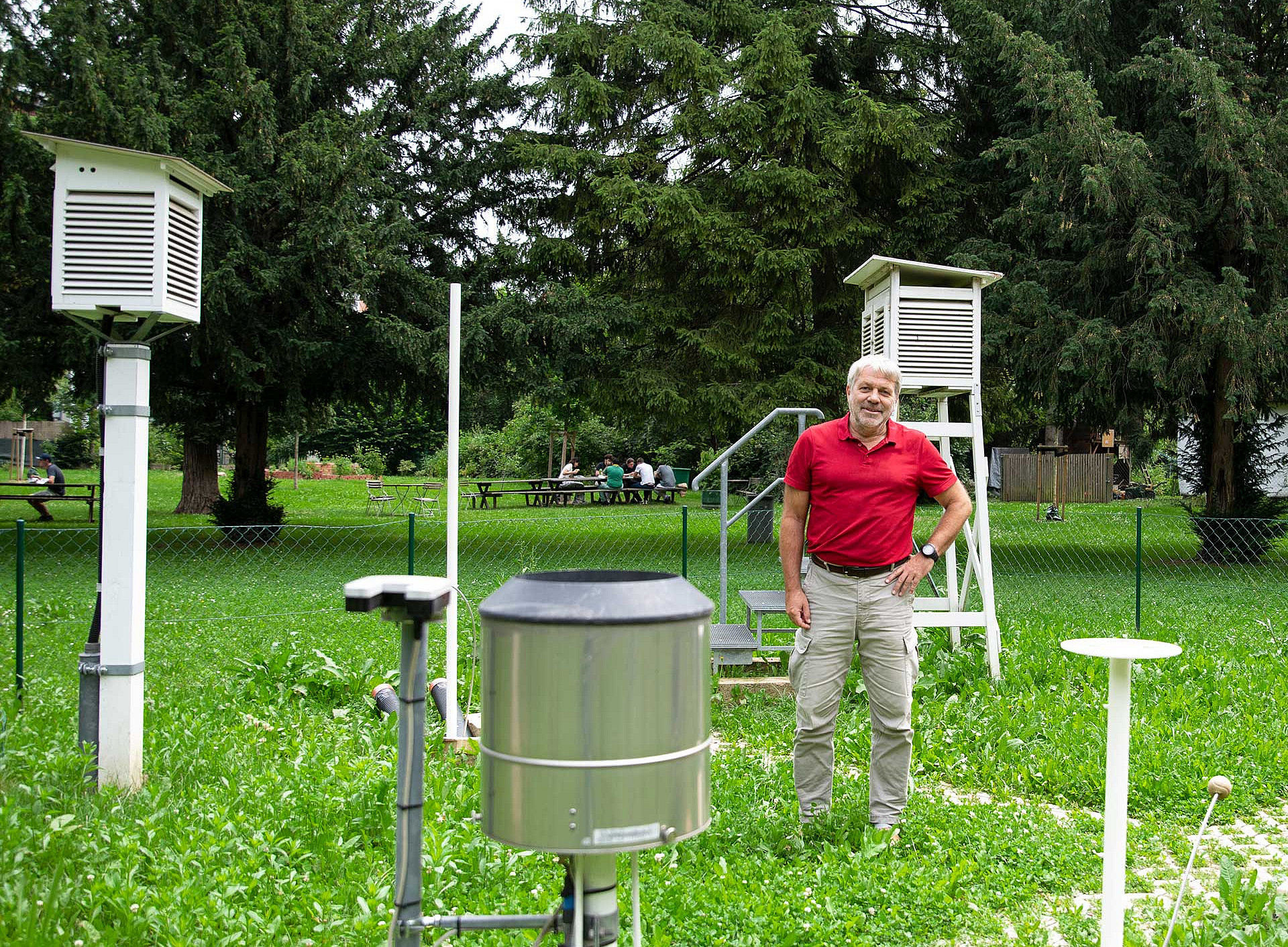Data for weather and climate studies has been collected on campus since 1891. Albeit at different locations. Until the Graz Center of Physics was completed, the station was moved from the meadow near the main building to near the Center for Molecular Biosciences. "It is on average 0.3 degrees Celsius cooler there," explains atmospheric physicist Ulrich Foelsche, scientific director of the station. This is why measurements were taken at both locations in parallel for a while.
Nonetheless, the temperature curve is continuously rising, as Foelsche confirms: "In the past 50 years, the average annual temperature has risen by two degrees to 12.2 degrees, and in summer by as much as three degrees. This means that we are now in a different climate zone."
In addition to temperature, humidity, air pressure, precipitation, wind speed and direction as well as sunshine duration are measured. The latter has increased by ten percent since the 1960s and is also fueling global warming because - an almost paradoxical situation - air quality has improved. "Less turbidity allows more sunlight through and leads to less cloud formation," explains Foelsche.
The station at the University of Graz was accepted as a Centennial Observing Station of the World Meteorological Organization, as the series of measurements go back more than 130 years. And even further back: the scientists are currently evaluating weather data recorded by a Graz family from 1780 and at the "Alte Uni" in Hofgasse from 1836.
Records in measurement history at the University of Graz
Even though summer arrived on June 19, 2024 with 33.6 degrees, the record was set in 2013 on July 29 and August 8 with 38.1 degrees.
The coldest days were minus 23.7 degrees on 24 January 1903 and 3 February 1929. The station recorded its wettest day to date on 30 July 2021, when it poured 113 liters per square meter.
► Learn more about the meteorological station
